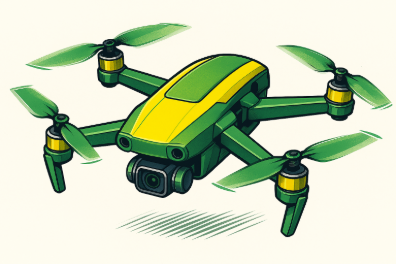This week, students from the Digital Ethics minor at The Hague University of Applied Sciences presented the results of their research on drones and ethics in the coastal area of The Hague. Key themes that emerged included privacy, safety, and responsible data use.
Voorafgaand aan de presentatie namen de studenten deel aan een landelijk onderzoek naar drones en ethiek, dat dit keer plaatsvond in het Living Lab Scheveningen. In deze proeftuin werd onderzocht hoe drones verantwoord kunnen worden ingezet in de openbare ruimte en welke ethische aandachtspunten daarbij komen kijken.
Three dilemmas as a starting point for dialogue
During the Moral Data City Hunt , the students presented three drone-related dilemmas to passers-by in Scheveningen:
| Drones should take nature into account | VS | Drones should fly as efficiently as possible |
| You may fly a Follow Me drone | VS | You must operate the drone yourself with a licence |
| Drone innovation should come from the government | VS | The private sector drives drone innovation |
By discussing these dilemmas, passers-by were given the opportunity to share their views on the use of drones in The Hague. At the same time, the conversations revealed the tensions, questions, and considerations involved in the responsible use of drones in public space.
The results of the national study will be published next year in a scientific paper. Following this, the students worked in three groups to explore how drones can be used ethically and responsibly, both now and in the future, in the coastal area of Scheveningen.
Drones over the Zandmotor nature reserve
De eerste groep richtte zich op het gebruik van drones boven natuurgebied de Zandmotor. Uit interviews blijkt dat recreatief dronevliegen verstoring kan veroorzaken, vooral bij kwetsbare vogelsoorten. Tegelijkertijd laten voorbeelden uit de praktijk zien dat drones tijdens de jaarlijkse vogeltellingen juist wel uitkomst bieden, omdat zij minder onrust veroorzaken dan onderzoekers die te voet door het gebied lopen.
The students saw a clear tension between using new technology and keeping vulnerable nature areas quiet. Their advice matches existing nature rules: do not ban drones, but use clear guidelines during bird breeding seasons, similar to the rules for dogs in protected nature areas.
AI-driven drones in the harbour
The second group looked at the use of AI-driven drones in and around the Scheveningen harbour. They explored possible uses, such as checking anchoring spots and supporting monitoring tasks. This use of drones is still in the research phase, but in the future it may be useful for harbour staff.
An important point is the privacy of people living nearby. The research shows that residents find safety more important than privacy, as long as it is clear and transparent what happens with the drone footage and who can access the data.
Sharing data from transport drones at sea
Scheveningen is a dynamic area not only along the coast but also at sea, where it is an important logistics hub. Ships on open water often need delivery of emergency or supply packages, and several organisations are exploring how drones can support this in a safe and efficient way in the future.
Transport drones use different sensors during their flight over land and sea, including cameras, to know their position and to detect obstacles in time. In some situations, this information can improve safety at sea, for example when risks are seen earlier. At the same time, it raises questions about privacy and careful use of data. The third group therefore looked at when sharing drone data is responsible, what observations make this necessary, and how this data may be shared.
The students conclude that there is no clear boundary for this yet. They do stress that clear agreements are needed beforehand, so that collected data is only used for the purpose for which it was gathered. This helps reduce the risk of function creep, where data is used for other purposes than originally intended.


Recommendations
The three studies show that transparency is an important condition for the responsible use of drones in public spaces. Two of the groups show that transparency can be improved by informing residents directly with signs in places where drones are active, such as in the Zandmotor nature reserve or around the harbour. These signs can explain local rules. A QR code can be added so that people can report disturbance immediately and with the correct location, which supports supervision and enforcement (see the impression in the image at the top left).
The students also suggest making municipal drones easier to recognise by using a uniform and noticeable colour scheme. They specifically mention a yellow-green design, matching the colours of the City of The Hague, so that residents can see at a glance that the drone is operated by the municipality (see the impression in the image at the top right).
Finally, the students emphasise the importance of an online overview that shows the current location and purpose of municipal drone flights. This helps ensure that everyone can see where drones are active and for what reason.